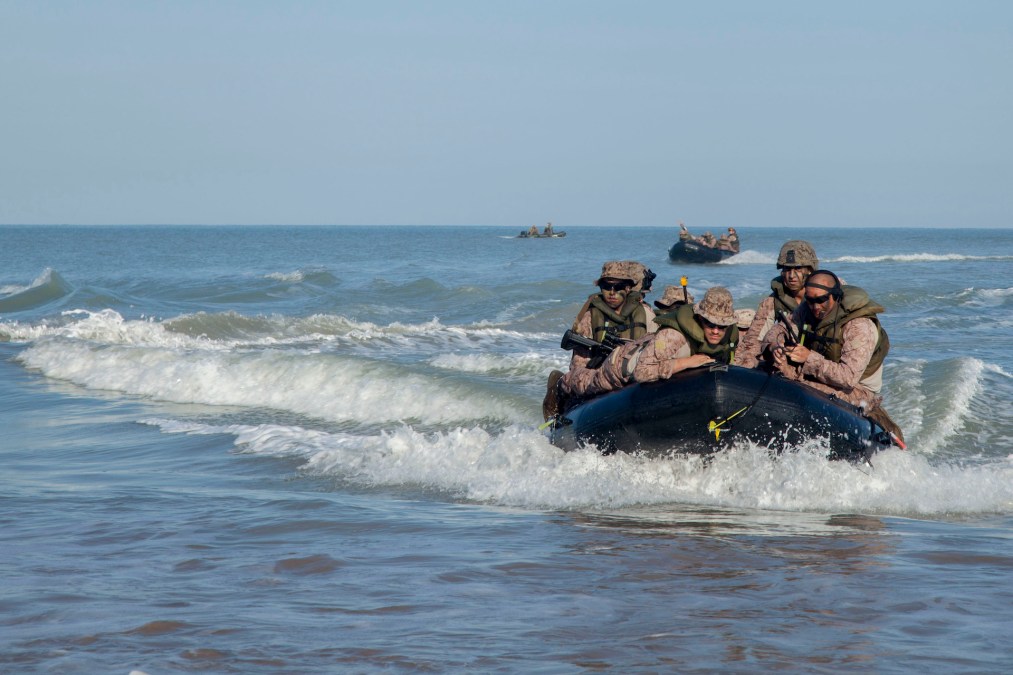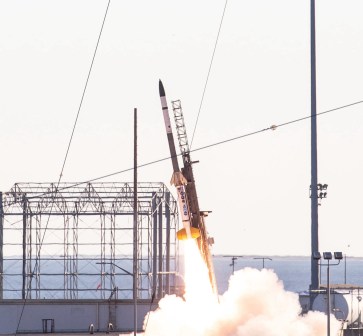US military to bring RDER, T-REX tech initiatives to Australia

The Department of Defense will be taking promising joint warfighting capabilities Down Under this year and next year for key assessments that could lead to accelerated fielding, according to the Pentagon’s chief technology officer.
The Rapid Defense Experimentation Reserve (RDER), and the Technology Readiness Experimentation (T-REX) efforts that feed into it, will be heading to Australia, Heidi Shyu told reporters Wednesday on the sidelines of the Potomac Officers Club’s annual Defense R&D Summit.
Australian officials attended T-REX 23-2 last year at Camp Atterbury, Indiana, which was held in partnership with the Indiana National Guard. During that event, DOD conducted 11 full-scale assessments of new warfighting technologies to measure their effectiveness and capability for further development based on the U.S. military’s needs, according to a Pentagon press release.
“The cool thing is, when we did our last technology readiness experimentation in Indiana, I invited the Aussies and U.K. to come down to witness what we’re doing. OK. They were thrilled. Right after that, our key lead flew down to Australia to witness their Autonomous Warrior experimentation. We’re in the process of planning integrated experimentation. We’re literally going to do T-REX in Australia. OK. So this is all the cool stuff we have ongoing and this will eventually lead to one of the RDER experimentations in Australia,” Shyu told DefenseScoop during the meeting with reporters.
The T-REX event Down Under is expected to take place this year, and a RDER experiment there is slated to follow next year, according to Shyu.
RDER, one of Shyu’s signature projects, was established in 2021. The aim is to accelerate technologies through the development pipeline from prototypes to validated military capabilities, working directly with the services, combatant commanders, the Joint Staff and industry partners. It’s focused on capabilities that are key to joint warfighting in a highly contested environment, including counter-command, control, computing, communications, cyber, intelligence, surveillance, reconnaissance and targeting (counter-C5ISRT); contested logistics; joint fires; command and control; and information advantage, she noted during her keynote at the Potomac Officers Club summit.
A goal is to accelerate capability delivery by two to four years compared to the traditional development process.
With T-REX and RDER, troops have an opportunity to put prototypes through their paces and provide feedback to DOD officials and industry.
“The RDER process draws upon the strength of iterative feedback loops between the warfighter and technologies throughout the testing and experimentation phases,” Shyu said.
The Pentagon’s R&E directorate has been working with the acquisition and sustainment directorate to find the best pathways for transitioning capabilities from development into procurement.
The procurement of three RDER capabilities was recently green-lit by the Deputy’s Management Action Group — a key Pentagon resource decision-making board.
“We had a classified DMAG. So, there were three initial experimentations we’ve gone through that proved military utility. And all three of those are moving forward. I can’t really get into a lot of the specifics, because you got to remember one thing, OK — RDER is scenario-based experimentation with a focus on joint warfighting capabilities, right, and pushing capabilities out as quickly as possible. So, these are the capability that’s maturing and going through and pushing out. So, I don’t want to tell China what we’re doing specifically, but the pipeline is started,” Shyu told DefenseScoop last month during a meeting with reporters at the Reagan National Defense Forum.
On Wednesday, Shyu said the services have stepped forward to be the executive agents for these capabilities.
“They actually have POM’d for” them, she said, referring to the program objective memorandum that sets funding plans for acquisitions. “So, this is how we’re pushing stuff through much quicker.”
Officials plan to bring more RDER capabilities to the Deputy’s Management Action Group for review later this year.
“We have stuff … go through the process continuously. Right. So the stuff, like over 30 items that we tested in Indiana, went to Northern Edge [a U.S. military exercise] for experimentation. The stuff that graduates and proves its military utility will come up to the DMAGs ready to accelerate it,” Shyu told reporters.






